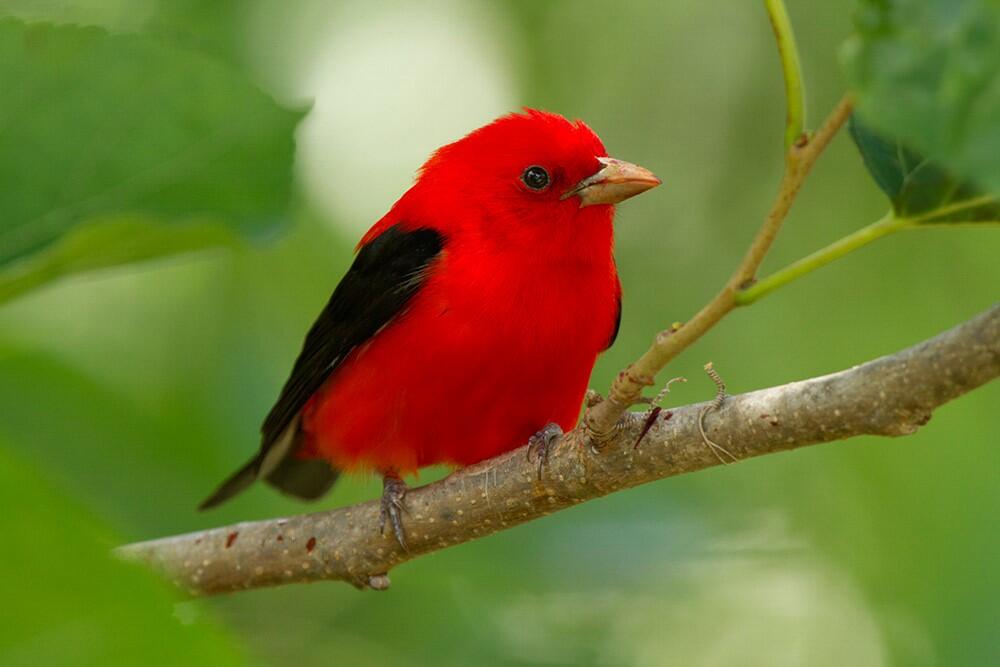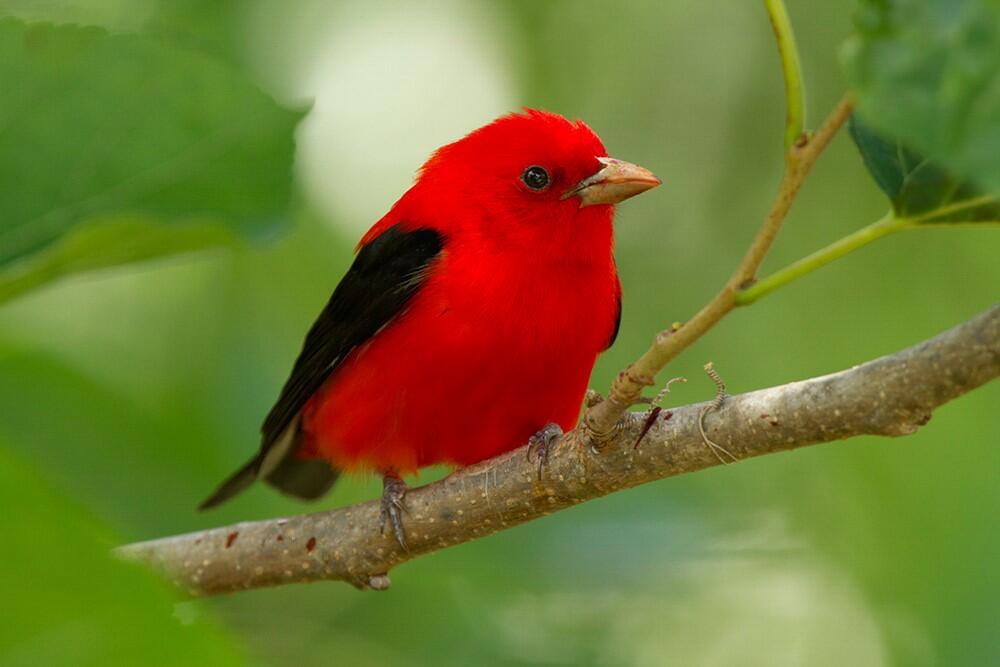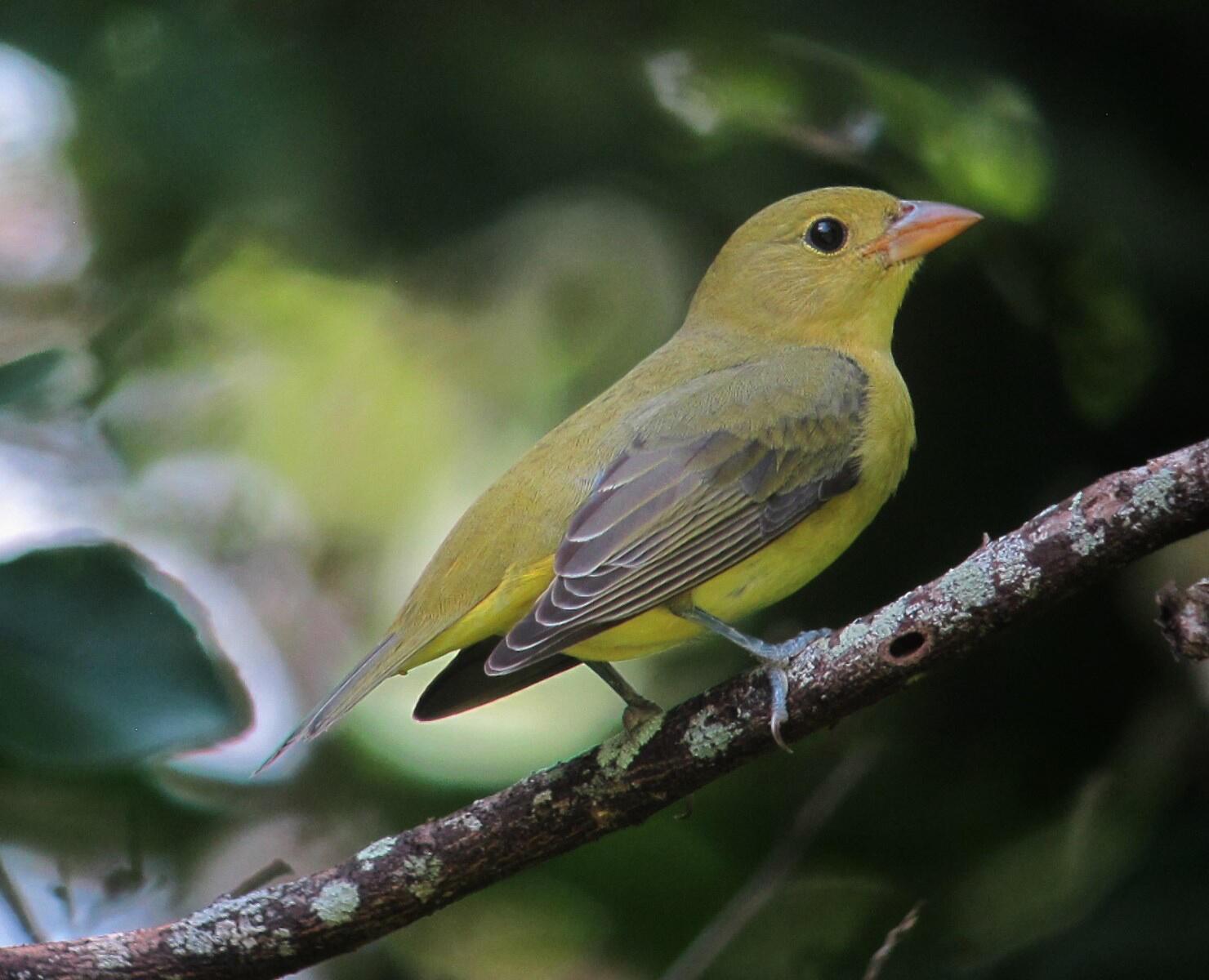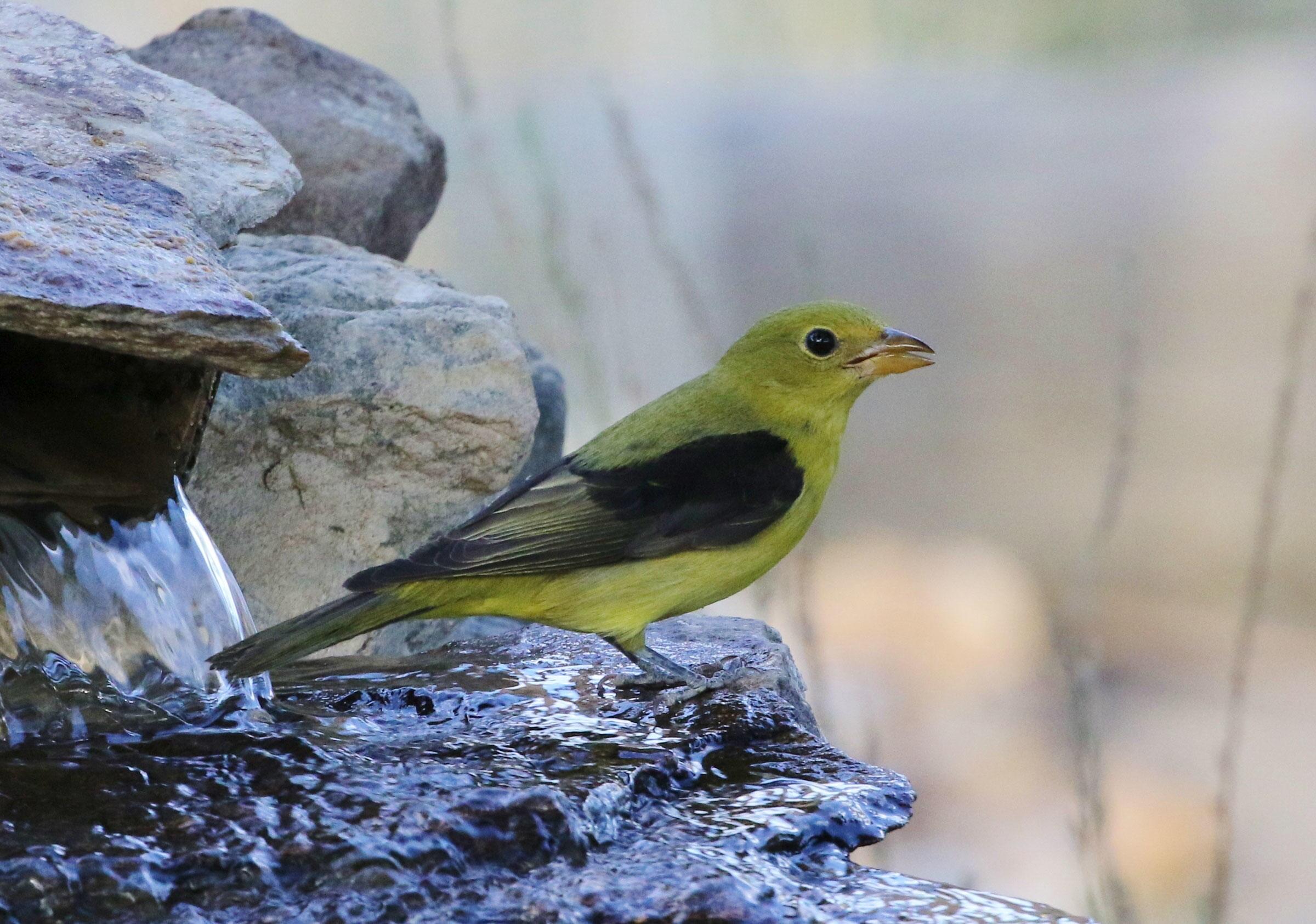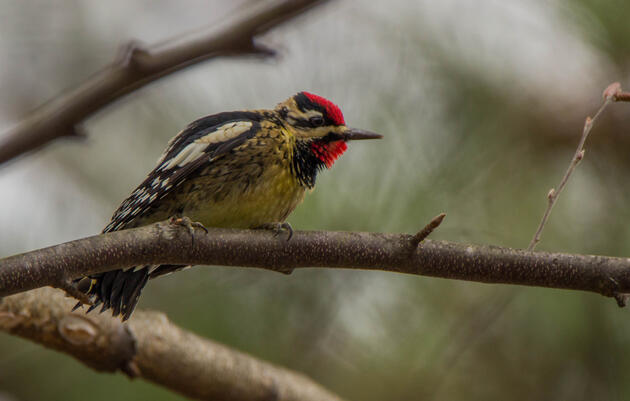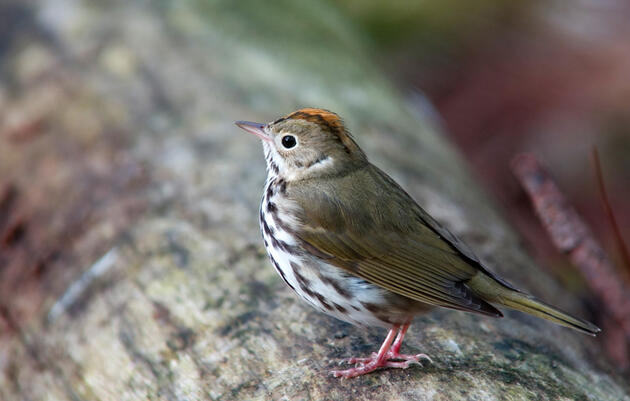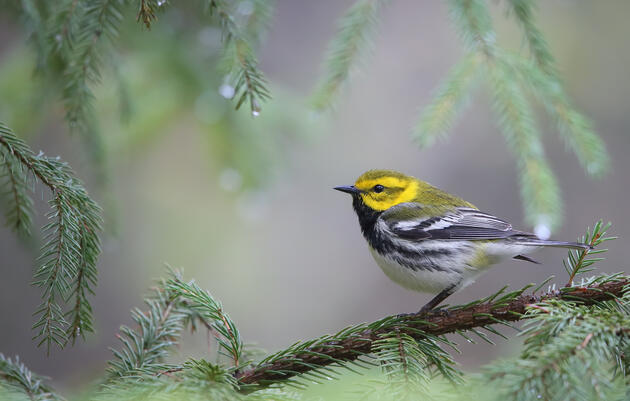The Scarlet Tanager is a songbird that breeds in the Northeastern and Midwestern regions of the U.S., gracing the canopy with its presence all summer long. As a resident of the sugar bush and the poster child of the Bird-Friendly Maple Project, let’s get the inside scoop on this tanagers personal life.
Biggest Fashion Faux Pas: Matching
Scarlet Tanager males and females are sexually dimorphic, meaning they would never ever show up to a party in the same outfit, they prefer instead to complement each other’s look. Males are absolutely striking in their bright red body, grey legs and jet-black wings and tail, a stand-out against the green foliage. Females prefer the understated yellow breast and olive head, with gray-brown wings and legs, subtlety is her specialty. The closest this pair gets to matching is when males molt in late summer, taking on a similar dull yellow look for the winter, careful to maintain just enough individuality with those dark black wings and tail.
Diet: Protein-packed and adventurous
While their wardrobe is their most esteemed identifier, Scarlet Tanagers are much less picky when it comes to what they eat. These songbirds are known to hop, hover, and flit around in the forest canopy searching above and below leaves and along branches for insects of any kind. They’ve been known to indulge in aphids, caterpillars, snails, spiders, and even wasps and bees. During early spring frosts, these tanagers can be found foraging along the forest floor for worms and other ground-dwelling insects. If fruits are available, they’ll enjoy elderberries, poison ivy berries, mulberries, blueberries, and raspberries.
Love Life: Opposites attract
Male and female tanagers don’t just differ in style, they also differ in song, and parental roles. The male’s song, much like his style, is louder and harsher than the females, and is commonly described as a robin with a bad cold: cheer-ree, chee-rear, cheer-ree, cheer-wow! Females song is very similar, but shorter and softer, singing in response to the male while she goes about her business. Both males and females may be best identified by their chick-burrr call from the tree tops where they are difficult to spot.
When attempting to impress a prospective female, males will hop between branches with their wings and tail spread out to draw attention to their flashy black and red coloring. During this elaborate display, the female will watch from a few branches above, contemplating her interest in this potential mate. If he has adequately impressed her, they will become a breeding pair for the summer. Efforts from the male diminish drastically following this dramatic mating display, leaving the female to take on the bulk of the brood-rearing responsibilities. Females tend to fly solo when it comes to raising offspring, building the nest and incubating the eggs on her own, with the male returning to the operation only when it comes time to feed the nestlings.
The Flame of Spring
Self-defense Motto: Strength in numbers
Scarlet Tanagers are not afraid of confrontation with most predators and will mob the predator as a group, diving and zipping by predators and making noise to persuade them to find new hunting grounds. This act of bravery is highly effective when facing predators like owls, but tanagers tend to react differently around crows and merlins, preferring flight to fight in these situations.
Favorite Neighborhood: Deciduous forest canopies full of oak, maple, and beech
The Scarlet Tanager’s idea of prime real-estate is about 20-30 feet up in an oak tree, situated out on a leaf-shaded limb, with mature deciduous forest as far as the eye can see. These songbirds prefer to be tucked deep into the forest interior, rather than the edge of the forest. The female tanager makes sure her family’s stay during the breeding season is as luxurious as possible, outfitting their shallow cup-shaped nest with twigs, grass, and fine root fragments. The male is a natural member of the neighborhood watch, and defends his territory with songs throughout the day, deterring other competing males from setting up nearby.
Recommended Getaway: Tropical forests of South America
As a neotropical migrant, the Scarlet Tanager will spend the breeding season in the Eastern and Midwestern U.S., and migrate down to the northern-most region of South America for the winter months. They live it up in the species-rich tropical rainforests of the region and believe it or not, compared to the year-round residents, the Scarlet Tanagers are quite dull in their yellow winter plumage. On these avian vacation grounds, this tanager is joined by its tropical tanager cousins, flycatchers, woodcreepers and antbirds.
Biggest pet-peeve: Habitat fragmentation and brood parasitism
Scarlet Tanagers are one of the many bird species that require intact mature forest, meaning that the trees have been growing undisturbed for at least 60 years and there is more forest interior than forest edge. Logging and development pose significant threats to the tanagers by increasing the amount of forest edge and eliminating the dense, connected forest habitats that they rely on for protection.
Scarlet Tanagers that nest in fragmented forests with increased edge habitat experience higher instances of brood parasitism, a reproductive tactic utilized by some bird species like the European Starling. When the tanagers are away from the nest, these birds will push out one of their eggs and lay one of their own in the nest. The host birds are unable to tell the difference between the offspring, and the result is often reduced survival of the biological offspring due to size, behavior, or competition of the additional fledgling during development.
As a resident of the sugar bush, and the face of the Bird-Friendly Maple Project, it is important that forests used for maple production maintain forest area, structural variety and species diversity to preserve habitat for the Scarlet Tanager. Mature, tall oaks, maples, and beeches should be preserved for nesting habitat, and the understory should be well developed and shrubby to provide protection when feeding on ground-dwelling insects and fruit.
You can be a friend to the birds of the sugar bush by supporting maple producers who are certified through the Bird-Friendly Maple Project, or by following the Project’s sustainable forest guidelines and earning the stamp of approval for your products.

